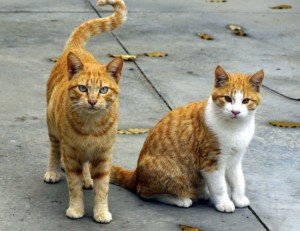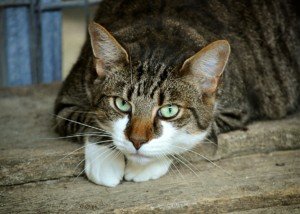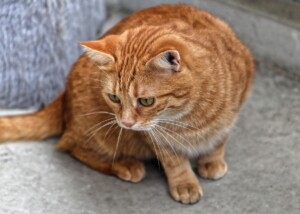
Here is a complete guide to cat stools from a veterinarian: what different shapes, colors, consistency and other features might mean.
It’s very important that you get comfortable with the idea of inspecting your cat’s poops on a recurring basis, because the caliber of a cat’s stools can be indicative of any number of medical conditions including cancer.
Cat Poop Color
“I get less concerned with stool color than I do with consistency and contents,” says Dr. Jules Benson, BVSc, chief veterinary officer with NationwideDVM, a pet insurer company.
He says that color is often related to diet. A healthy cat stool should range from very light brown to almost black.
Cat Poop Consistency, Shape and Additional Features
Dr. Benson urges cat owners to keep a lookout for the following in their pet’s poops:
Consistency: Very soft stools (diarrhea) can be caused by many disease processes, and if this is a consistent finding in the litter box (or elsewhere!), or if your cat seems “off” and there is diarrhea, you should consult your veterinarian, explains Dr. Benson.
Very hard stools, such as small, hard balls rather than long, formed stools, can be “a more insidious marker of disease,” he says.
If your cat’s stools are hard, this can indicate any of the following: Underlying dehydration, kidney disease, diabetes, overactive thyroid, some forms of cancer and other conditions.
“Hard stools can also lead to constipation or GI blockage,” says Dr. Benson.

More Features of Cat Poops
“Blood, mucus, parasites and foreign materials can all also indicate changes or problems,” says Dr. Benson.
Blood: If you see fresh blood in the stools, this usually means an abrasion of the colon, often caused by colitis.
This can be a primary disease process, or secondary to other conditions like inflammatory bowel disease, explains Dr. Benson.
That’s not all. Fresh blood in the stools can mean there’s bleeding in the lower intestinal/rectal region, possibly from cancer. However, colitis is by far more likely.
Mucus: This gooey substance in a cat’s poop usually indicates colitis.
Parasites: Yes, it’s possible for the owner to see segments of tapeworm, the size of rice, in the poops of outdoor cats.
Dr. Benson urges you and your vet develop a regular deworming schedule.
“Every annual exam, make sure you bring in a stool sample to be examined by your vet, even for indoor cats.”
Foreign materials: Cats are capable of ingesting non-food items, such as grass, string, stones and even Christmas decorations, says Dr. Benson.
This cat poop guide won’t do you much good unless you commit to getting used to viewing your pet’s feces on a regular basis, and then following up with your vet if you see anything concerning.
 Dr. Benson is regularly consulted by many media outlets including ABC, NBC, FOX, The Wall Street Journal and The New York Times to provide pet health advice to pet parents nationwide.
Dr. Benson is regularly consulted by many media outlets including ABC, NBC, FOX, The Wall Street Journal and The New York Times to provide pet health advice to pet parents nationwide.
 Lorra Garrick has been covering medical, fitness and cybersecurity topics for many years, having written thousands of articles for print magazines and websites, including as a ghostwriter. She’s also a former ACE-certified personal trainer.
Lorra Garrick has been covering medical, fitness and cybersecurity topics for many years, having written thousands of articles for print magazines and websites, including as a ghostwriter. She’s also a former ACE-certified personal trainer.









































